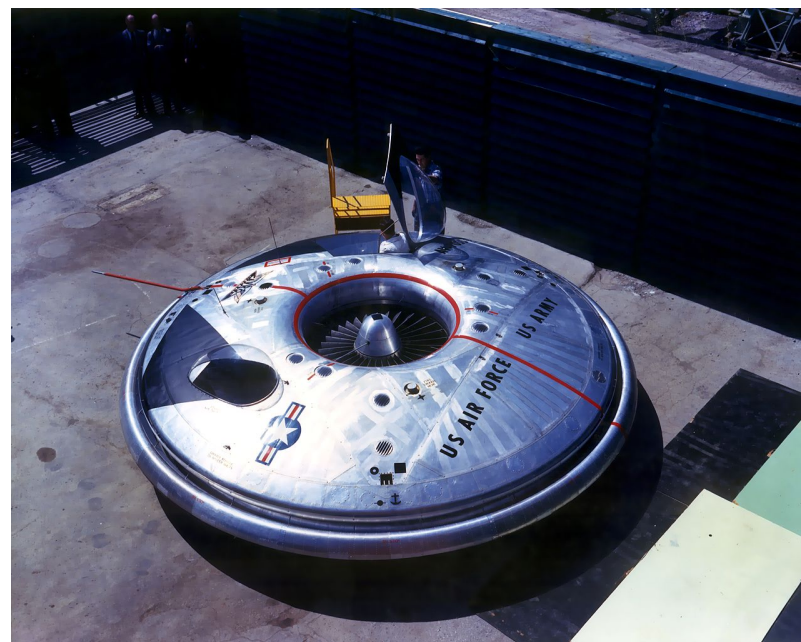The U.S. Air Force’s Flying Saucer and Its Link to the X-35 Lightning II
That the U.S. Air Force once seriously toyed with flying saucers is relatively well known. These machines, called Avrocars, contained giant lifting fans to raise them off the ground.

It is less well known is that the concept did not die when funding for the project was withdrawn in 1961. Indeed, a lifting fan is a key component of the Lockheed Martin X-35B Lightning II that helps it off the ground during short take offs and vertical landings.
Today, Desire Francine Fedrigo, an independent writer based in Brazil, and a few pals provide a potted history of the Avrocar and how it came to be a forerunner to the F-35B.
Fedrigo and co do not appear to rely on any new sources of information to compile their report—the Avrocar program was declassified in the 1960s. Indeed, the report includes little that is not already published on Wikipedia.
However, the team does emphasize just how poor a flyer the Avrocar really was. Various test flights showed that it was inherently unstable and often began to oscillate uncontrollably soon after takeoff.
It was also hot and almost unbearably uncomfortable for the pilot. And it demonstrated various idiosyncrasies such as taking five seconds to turn 90 degrees to the left but 11 seconds to turn the same amount to the right, presumably because of its central rotating fan.
The U.S. military had initially thought the Avrocar, or something like it, would replace the helicopter. But it soon became clear that this was little more than a pipe dream, and the project was canceled in 1961.
Interestingly, the total spend on the project, which accounted for several prototypes, was $10 million. That’s less than $100 million in today’s money and remarkably good value.
The F-35B, on the other hand, has cost $60 billion to develop and will set you back a further $100 million should you choose to buy one. A significant fraction of this development cost has been on the lift fan, a central turbine embedded in the airframe.
This arrangement is a complex affair that has not been without problems. Nevertheless, Lockheed Martin is confident it has these problems licked. Perhaps the Air Force could have been equally certain in 1961 had it been given access to the equivalent of $60 billion to develop the Avrocar.
Ref: http://arxiv.org/abs/1507.06916 : Avrocar: A Real Flying Saucer
Keep Reading
Most Popular
Large language models can do jaw-dropping things. But nobody knows exactly why.
And that's a problem. Figuring it out is one of the biggest scientific puzzles of our time and a crucial step towards controlling more powerful future models.
The problem with plug-in hybrids? Their drivers.
Plug-in hybrids are often sold as a transition to EVs, but new data from Europe shows we’re still underestimating the emissions they produce.
How scientists traced a mysterious covid case back to six toilets
When wastewater surveillance turns into a hunt for a single infected individual, the ethics get tricky.
Google DeepMind’s new generative model makes Super Mario–like games from scratch
Genie learns how to control games by watching hours and hours of video. It could help train next-gen robots too.
Stay connected
Get the latest updates from
MIT Technology Review
Discover special offers, top stories, upcoming events, and more.